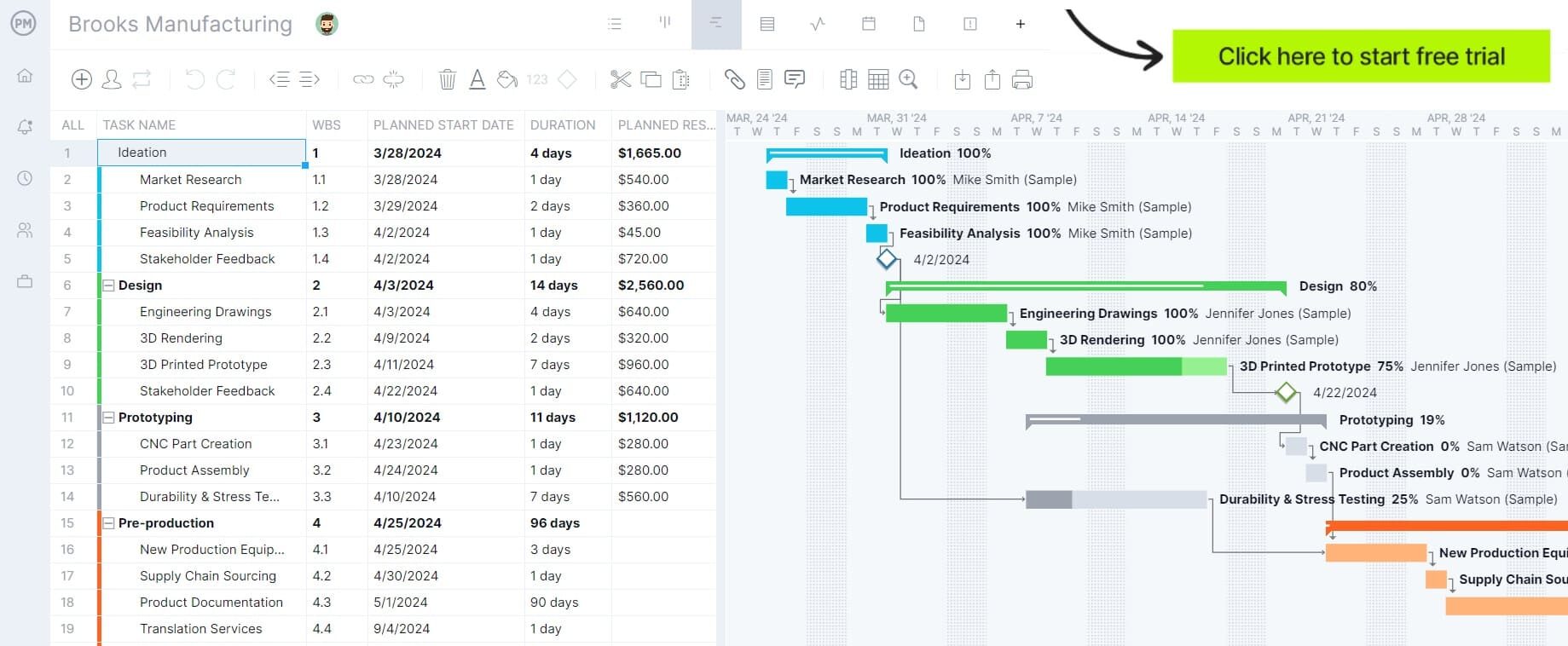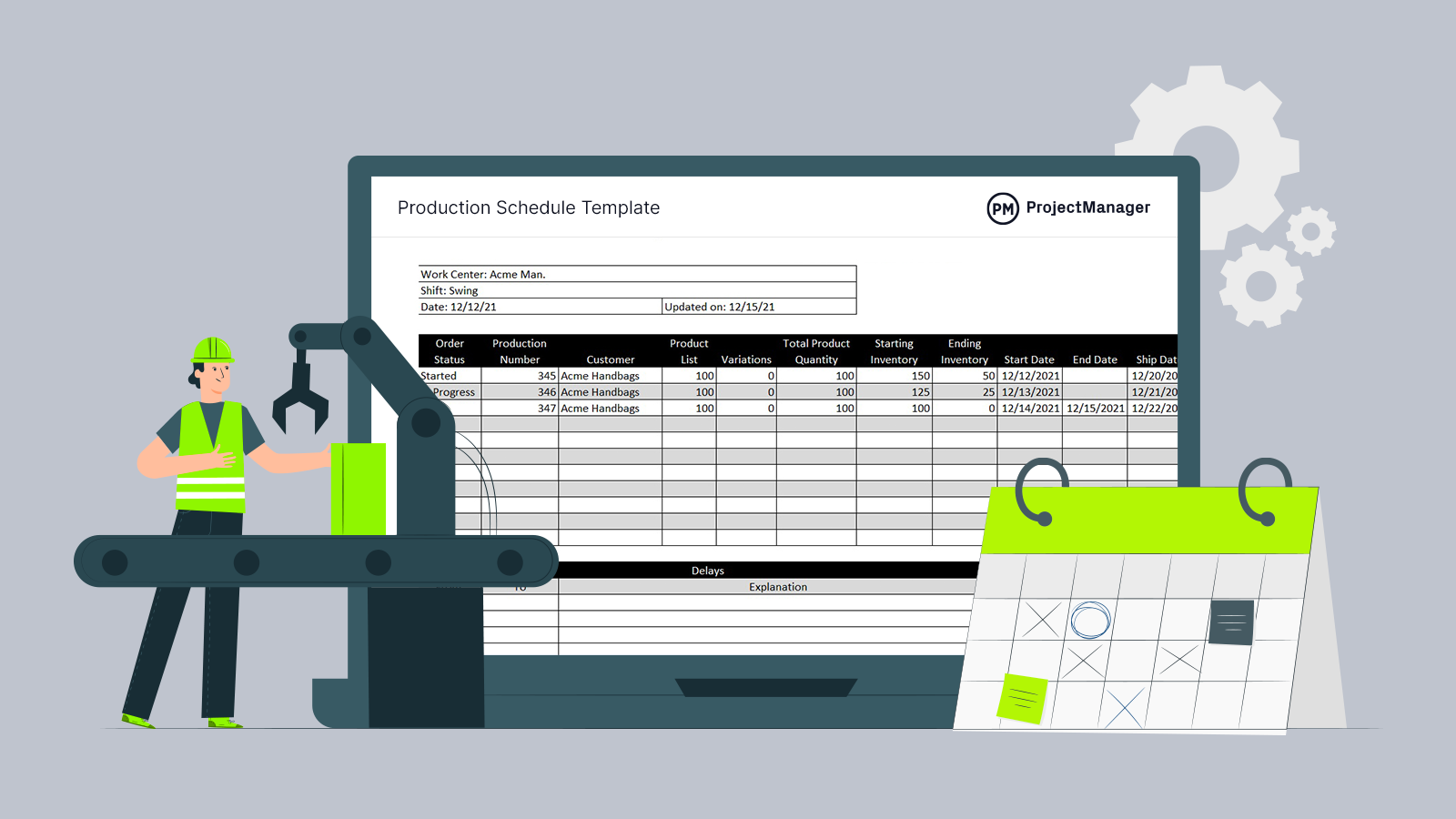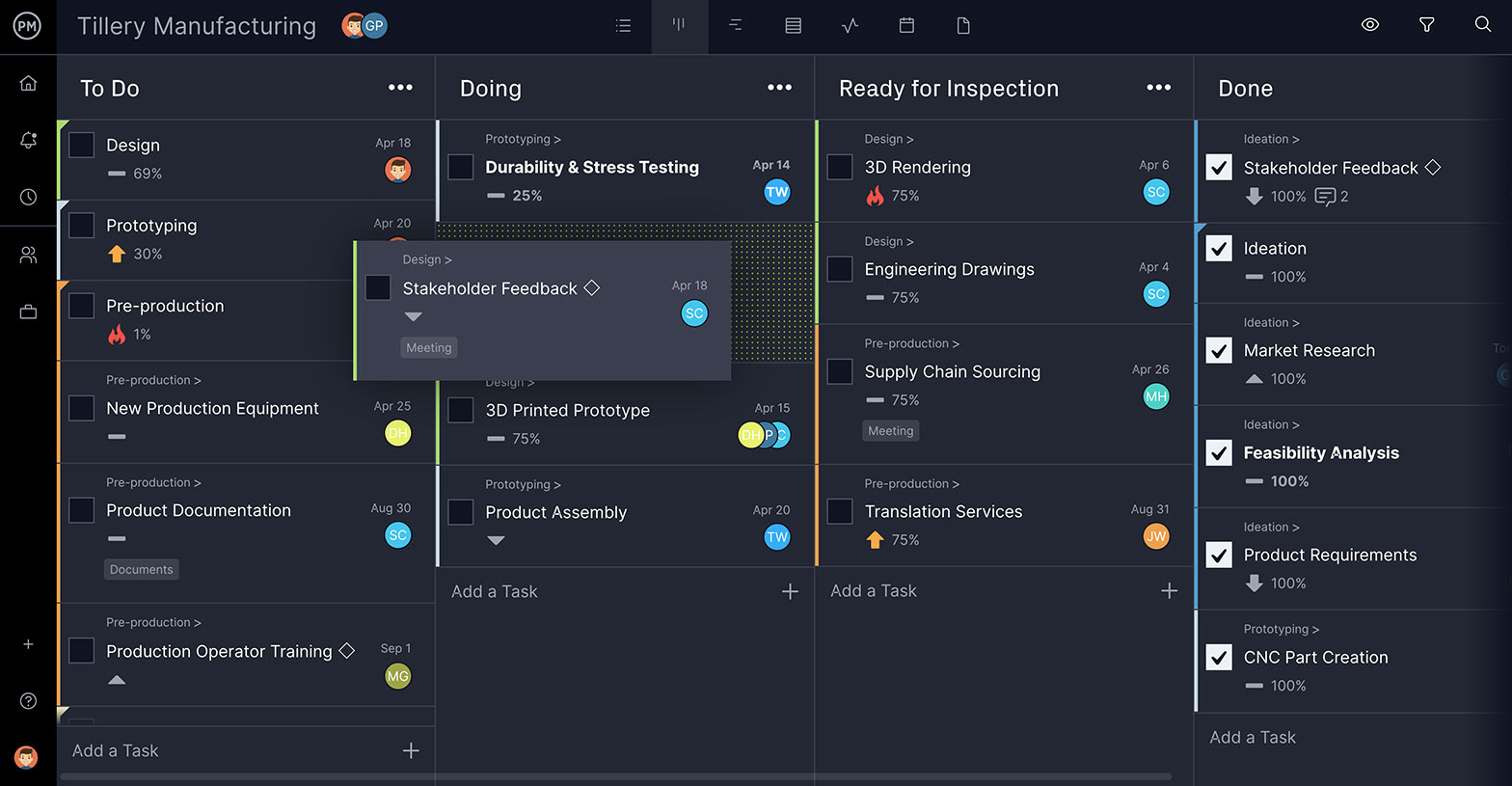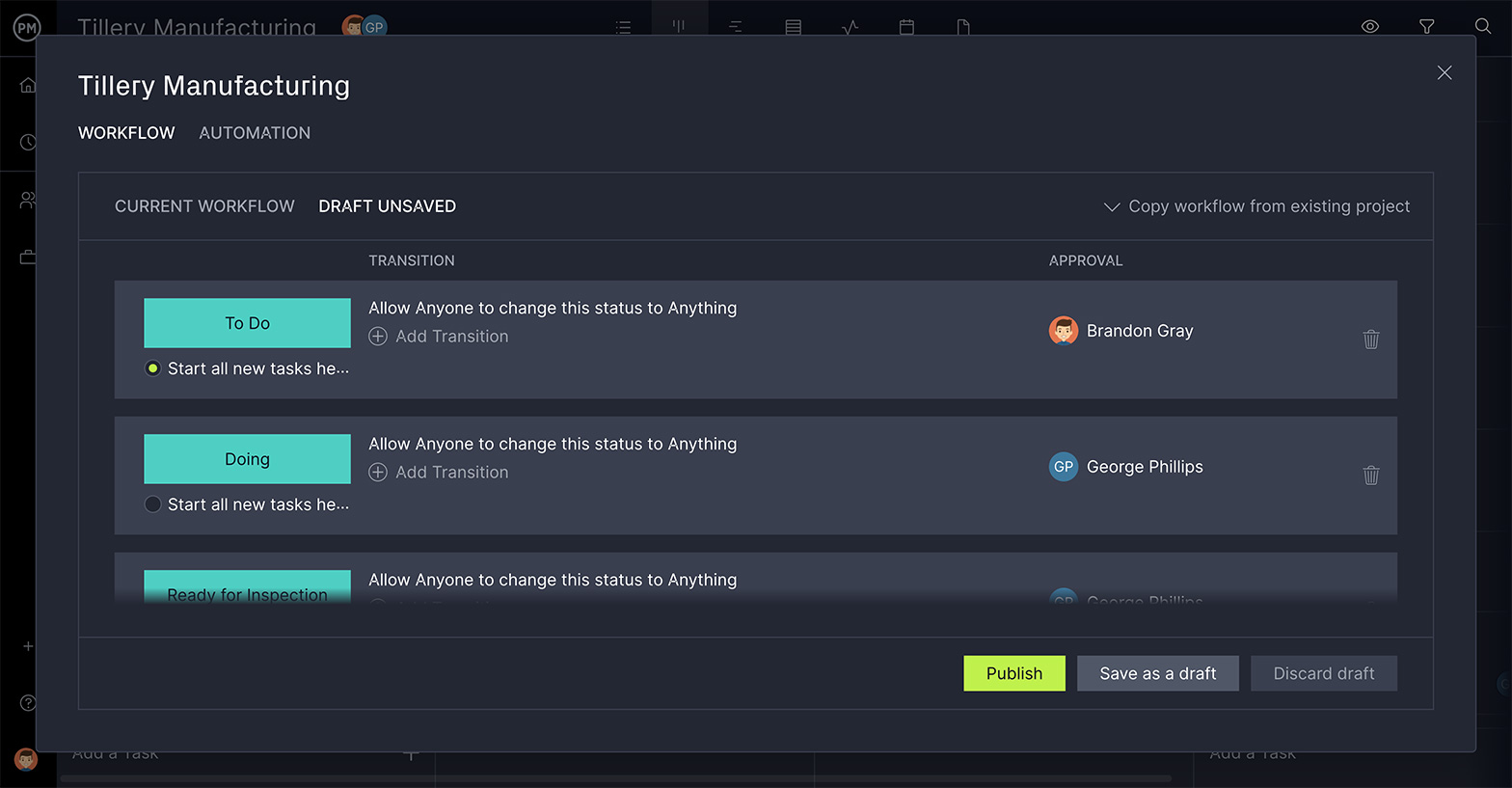By the time a product shows up on the shelf, it’s been through a much longer journey called the manufacturing cycle. Each product is manufactured from raw materials that need to be procured before the product hits the market.
The manufacturing cycle is an essential part of all types of manufacturing. Let’s define the manufacturing cycle, chart its steps and look into related terms such as manufacturing cycle time.
Manufacturing Cycle Definition
The manufacturing cycle is the steps taken to turn an idea into an actuality. It’s a process that takes a new or existing product from design to raw materials and then assembles those pieces to create the final product.
There is both simple and complex manufacturing. The main difference is the detail and repetitiveness of the process. For example, a simple manufacturing process differs from a complex one in that there’s only one flat bill of material needed for the entire project. A complex manufacturing cycle will have sub-assemblies to complete the product.
Whether you’re running a simple or complex manufacturing cycle, it’ll work more efficiently if planned and monitored with project management software. ProjectManager is online software that helps you plan and manage resources during the manufacturing cycle. Use our award-winning Gantt chart to build an in-depth project plan equipped with the various production stages. It’s easy to see what tasks need to be completed in a strategic way to turn the idea into a reality. Get started with ProjectManager today for free.

Manufacturing Cycle Steps
There are many steps to any manufacturing process, and businesses require funding, employees and equipment to produce the product they’re manufacturing. In this blog, we’re discussing the process once you have an idea for the product you’re going to manufacture. The manufacturing cycle is made up of six basic steps.
1. Planning
Before you start manufacturing, you need to have a defined plan. Any vagueness will result in problems, either delaying the schedule or increasing the budget. This means you need to outline the activities, deliverables and resources necessary to execute these tasks while meeting your deadline and budget. This takes time and research as well as a lot of documentation, such as a product requirements document. The time and effort you spend on this step increase the likelihood of a successful manufacturing cycle.
2. Design
Once you’ve defined the requirements for the product and the plan that will get you there, you have the parameters to develop the industrial design. As you go through the process of designing the product, there will be reviews and revisions to make sure you’re meeting your plan requirements. You’ll even need to manage risks to identify and mitigate any issues that might impact safety or functionality.
Related: 10 Free Manufacturing Templates for Excel
3. Prototype
The production cycle begins in earnest with the building of the first prototypes. Typically, there are three stages to prototyping: alpha, beta and pilot. The alpha prototype is also called the proof-of-concept model, which is created to test the early design. The beta prototype represents the entire product besides some final details such as coloring, packaging, etc. The pilot production is used to show that the production processes are working.
4. Design for Manufacturing
At this point, you’ll make any changes to your product that were identified during the prototyping process. Then you’ll update the design and manufacturing process to improve manufacturability and reliability. This is where you can increase the scale of your production. It is also where you’re responsible for the required documentation, assembly and test procedures.
5. Manufacturing
At this stage, you’re not quite ready for production. To produce your product, you’ll need space, equipment and people. Depending on the scale and scope of your manufacturing, you can do this with a few tables, tools and technicians. But if you’re working on larger scale, more complex manufacturing, you’ll need manufacturing space, warehousing space, machinery, relationships with suppliers and more.
6. Post-Manufacturing
After manufacturing the product, you’re not finished. You have to determine how to deliver your product and install it if necessary. There’s also the maintenance and any training needed for customers to use your product. Post-manufacturing is all about customer service. Depending on what your product is, you’ll need to invest in a field service technician for installation, setup and commissioning, maintenance, repair and so on.

Get your free
Production Schedule Template
Use this free Production Schedule Template for Excel to manage your projects better.
What Is Manufacturing Cycle Time?
Manufacturing cycle time is how long it takes to go from raw materials to finished goods. It includes the time involved in loading, machining, assembly, inspection, material movement, ideal waiting and all other actions taken in the manufacturing process.
How to Calculate Manufacturing Cycle Time
Determining the manufacturing cycle can be calculated by adding the value-added time or productive hours with the non-value-added time or non-productive hours. The value-added hours include a process, material movement, inspection and idle waiting time. Non-value-added time is movement and queue time.
This likely sounds like an impossible job. Trying to accurately estimate all of those variables isn’t feasible. That’s why calculating manufacturing cycle time is simplified to dividing the number of parts by the run time required to produce them.
Manufacturing Cycle Time = Total Parts Produced / Run Time
Manufacturing Cycle Time Example
To illustrate the manufacturing cycle time, let’s look at an example. Let’s say that you’re a bicycle manufacturer and your plant can produce 100 bikes over a 40-hour week. On average, it takes 0.4 hours or 24 minutes to manufacture one bicycle. That makes the manufacturing cycle time 24 minutes.
Production Schedule Template
Even if you’re focusing on manufacturing cycle time, you’ll also need to factor in your production schedule. Download this free production schedule template for Excel to track your orders, production dates, inventory and more.

How to Reduce Manufacturing Cycle Time
There are different cycle times; from manual cycle time, which involves loading and unloading machines, to machine cycle time, which is the time working on a machine. There’s also auto cycle time, which is how long a machine runs un-aided, as well as overall cycle time, which is the time it takes to produce a single item. Total cycle time includes everything, as in our calculation.
Whichever manufacturing cycle time you’re working with, the goal is to create greater efficiency. You can look at non-value-adding activities, such as waiting time and material movement time. You can focus on value-adding activities, which have an impact on quality and continuity. You can also look at the whole manufacturing cycle. Wherever you focus, the results can enhance your customer satisfaction.
You can also reduce the idle and waiting time. For example, by having materials and resources readily available, you can minimize idle time at the front end of the manufacturing cycle. This requires effective material requirements planning that’s integrated into your supply chain.
Another tactic is to reduce material movement. This can be done with a more effective layout and a plan to optimize route cards. Exploring less movement in these actions can reduce the impact of manufacturing cycle time.
Another consideration is inspection time. You need to have in-line and end-of-line inspections to make sure you’re delivering quality and adding value to the product. Automation can reduce the delays that human quality control is subject to. Accelerating inspection time without having the product lose quality is key.
Since manufacturing cycle time can impact customer satisfaction, any effort to add efficiency to this process needs to ensure it’s not cutting into customers’ expectations. It’s important to understand the key components of the order and how you’ll sequence the activities to manufacture them. Some of these might be executed in parallel, helping to reduce manufacturing cycle time.

ProjectManager Helps with Manufacturing Cycle Efficiency
Another way to reduce manufacturing cycle time and boost efficiency in your production is to use ProjectManager. Our software helps you plan, monitor and report on every step of your manufacturing cycle. We give you real-time data to make more insightful decisions and tools to monitor and improve upon your manufacturing cycle while connecting everyone across departments for better collaboration.
Visualize Workflows With Kanban Boards
Monitor every stage of your manufacturing cycle with our kanban boards. Each column is a stage and every card is one activity. You can then have your team manage their backlog and plan their production together. Managers can get a visual view of the cycle and see if there are any bottlenecks threatening to delay production. They can then quickly reallocate resources to keep everyone working uninterrupted and at capacity.

Automate Workflows and Ensure Quality
Another way to ensure you’re running an efficient manufacturing cycle is with workflow automation. Our software lets you set up as many triggers as you need, each of which directs a specific action without team members having to do a thing. This keeps them focused on more important work. If you’re worried that poor quality will get flagged, know that you can set up task approvals to make sure that you inspect the activity before it can change status and maintain your quality expectations.

Our automated workflows are available on any of the multiple project views, from the kanban to Gantt charts, list, sheet or calendar views. Use real-time dashboards for a high-level view of the manufacturing cycle and one-click reports to delve deeper into the data. Reports can also be filtered to show only what you want to see and then shared to update stakeholders.
ProjectManager is award-winning manufacturing project management software that helps you find efficiencies in your manufacturing cycle. Our online tool connects everyone, regardless of what department they’re working in, with the tools they need to get their job done, monitor progress and report on performance. Whether you’re running one or dozens of production lines, we can help you stay productive. Get started with ProjectManager today for free.

